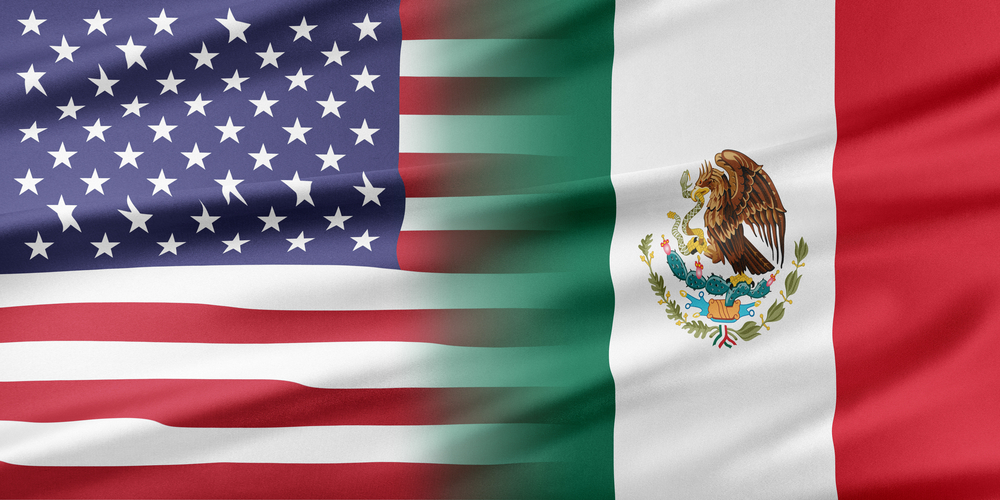Manufacturing in Mexico has become more popular than ever, particularly for companies based in the U.S. and Canada. Not only are turnaround times between production and delivery to consumers shortened considerably, but profit margins are also increasing due to the lowered overhead that comes from manufacturing goods in Mexico.
For many years, China was the first choice of companies looking to move their production operations to a foreign land. This was done in an attempt to generate more profits without sacrificing the quality of finished goods. But now, offshoring attention has shifted to Mexico, and China is feeling the pinch.
According to the South China Morning Post, citing data from Boston Consulting Group, 10 years ago, it was 6 percent more expensive to manufacture goods in Mexico compared to the cost in China. That has since changed and now manufacturing in Mexico is 4 percent cheaper than in China.
 For many years, foreign companies moved their manufacturing operations to China. Now, times have changed.
For many years, foreign companies moved their manufacturing operations to China. Now, times have changed.
"The primary reason is that in China, labor costs soared and productivity was not able to keep up," the newspaper quoted the Boston Consulting Group in a report. "In Mexico, the 67 percent rise in average manufacturing wage from 2004 to 2014 was almost entirely offset by productivity gains in the modern industrial sector."
The automotive, aerospace and consumer electronics sectors are just a few that have seen a considerable increase in activity in Mexico over the last 10 years. In a report from Inc. Magazine, the average worker wage in Mexico is roughly $3.50, which is 40 percent higher than China. However, wages in Chinese factories are expanding at an annual basis of 14 percent, and Michael Zinser of Boston Consulting Group expects Chinese factory workers to demand salaries as much as 25 percent higher than their Mexican counterparts.
Offshoring attention has shifted to Mexico, and China is feeling the pinch.
Inc. noted other contributing factors to Mexico being favored over China. The Yuan, the country's currency, has seen its value slowly increase. This means to satisfy the wage requirements of workers, the additional production costs must be passed to the foreign manufacturer and then on to the consumer.
If you factor in the rising costs of international shipping and longer lead and turnaround times faced in China due to labor shortages, it's easy to see why Mexico is being seen in a much more favorable light.
Given these various indicators, it's no wonder China is concerned about losing its grip on offshoring to a country that is aggressively working to steal marketshare from the world's most popular manufacturing destinations.
Trade between U.S. and Mexico increasing
While there are a number of foreign manufacturers doing business in both Mexico and China, companies based in the U.S. are realizing the benefits of manufacturing inside the borders of its southernmost neighbor.
"When you have the wages in China doubling every few years, it changes the whole calculus," Christopher Wilson, an economics scholar at the Mexico Institute of the Woodrow Wilson International Center for Scholars, told The New York Times. "Mexico has become the most competitive place to manufacture goods for the North American market, for sure, and it's also become the most cost-competitive place to manufacture some goods for all over the world."
The Times wrote that trade between the U.S. and Mexico has grown to $507 billion annually, a 30 percent increase dating back to 2010. In addition, manufacturing investment in Mexico was valued at $35 billion in 2013. In a recent report from Mexico News Daily, in 2014, trade with the U.S. reached record-breaking levels.
The website wrote that imports from Mexico to the U.S. were up 5 percent in 2014, bringing the total value of trade between the two countries to $534 billion. In addition, 12.5 percent of all goods imported into the U.S. last year, originated from Mexico - to the tune of $294 billion, an increase of 4.9 percent.
It has essentially become much more difficult for China to compete with Mexico, particularly in the area of manufacturing.
The relationship between Mexico and the U.S. continues to improve
As China continues to work to maintain its relationship with the foreign companies that manufacture products in the country, Mexico and the U.S. are strengthening their business bond and reliance on one another. The Woodrow Wilson International Center for Scholars wrote that there are roughly 6 million jobs in the U.S. that depend largely on trade with Mexico - as many as 463,000 of these employment opportunities are based in Texas and 692,000 more in California.
In addition, Mexico's North American Free Trade Agreement has caused U.S. investment in the country to become six times larger than it was before NAFTA. Foreign direct investment between the countries was a paltry $1.2 billion in 1993. By 2010, the number was $12.6 billion and it continues to grow as more companies realize the value of manufacturing in Mexico.
While China may not totally lose it's offshoring grip. The country knows that it will need to take aggressive measures to try and compete with a burgeoning Mexico; a country that seems poised and ready to capitalize on its newfound attention from foreign manufacturing organizations.
Subscribe
Sign up and stay informed with tips, updates, and best practices for manufacturing in Mexico.





